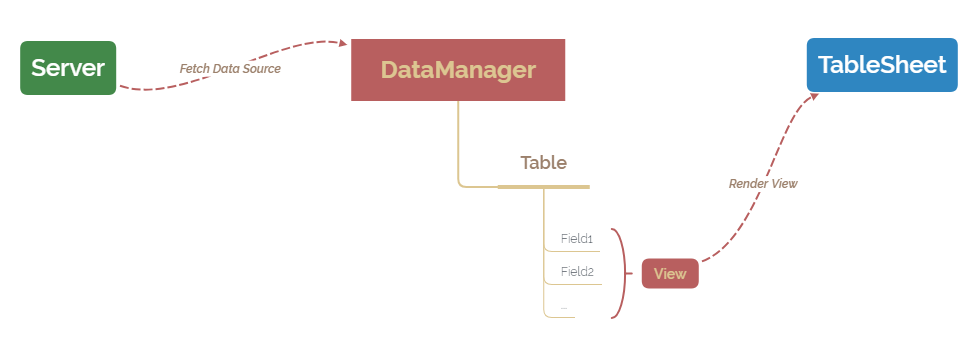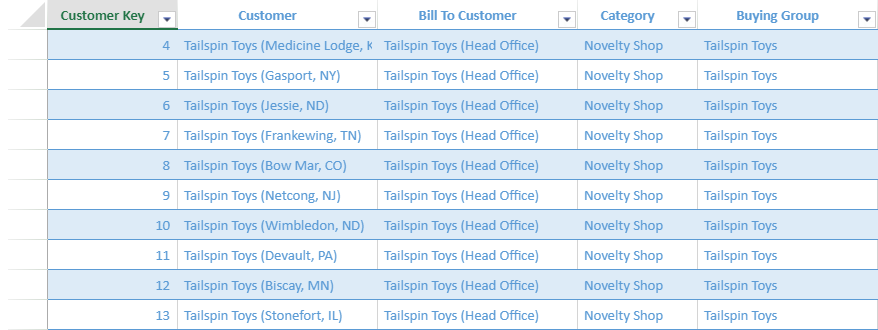- SpreadJS Overview
- Getting Started
- JavaScript Frameworks
- Best Practices
-
Features
- Workbook
- Worksheet
- Rows and Columns
- Headers
- Cells
- Data Binding
- TableSheet
- GanttSheet
- JSON Schema with SpreadJS
- SpreadJS File Format
- Data Validation
- Conditional Formatting
- Sort
- Group
- Formulas
- Serialization
- Keyboard Actions
- Shapes
- Form Controls
- Floating Objects
- Barcodes
- Charts
- Sparklines
- Tables
- Pivot Table
- Slicer
- Theme
- Culture
- SpreadJS Designer
- SpreadJS Designer Component
- Touch Support
- Formula Reference
- Import and Export Reference
- Frequently Used Events
- API Documentation
- Release Notes
TableSheet
TableSheet is a fast, data-bound table view with grid-like behavior, a spreadsheet user interface and calculation engine which uses the Data Manager to pull data from the server, interact with it and then creates a view of the fetched data to bind to a tablesheet.

The main benefits of using a tablesheet are described below:
Better sheet-binding resulting in better performance in sort and filter.
Support group blocks with group-level calculations and slicers.
Runtime panels to allow adjusting columns and groups.
Conditional formatting and rules based on bound data instead of spreadsheet cell values.
A tablesheet can be created using the GC.Spread.Sheets.TableSheet.TableSheet and GC.Data.DataManager classes. The Data Manager is a powerful local data engine which interacts with the database to pull data, manage it and to sync real time data back to database and it then creates a view of the fetched data to bind it to a tablesheet.
The following image shows a tablesheet created for a goods importer and distributor company.

TableSheet Features
For using tablesheet and its various features, refer the below topics:
Features | Description |
|---|---|
Describe tablesheet structure, and its components. | |
Describe the working of Data Manager and its methods. | |
Create tablesheet in the spreadsheet through code. | |
Control and customize the display of tablesheet columns: | |
Edit the data source efficiently with different sync modes. | |
Define and create table and field relationships with Data Manager. | |
Perform different types of operations on a tablesheet: | |
Manage rules like conditional formatting and style rules in a tablesheet. | |
Customize the appearance of a tablesheet: | |
Utilize the enhanced calculation engine to add calculated columns and reference tablesheet in a worksheet. | |
Interact with the tablesheet with different actions: | |
Export tablesheet to different file formats: |


